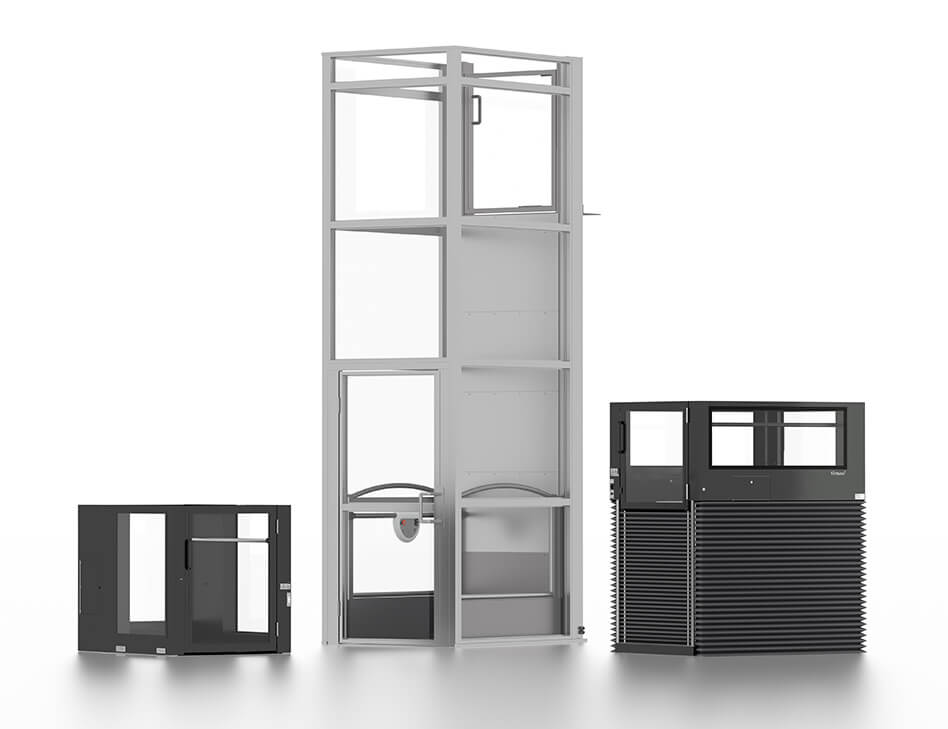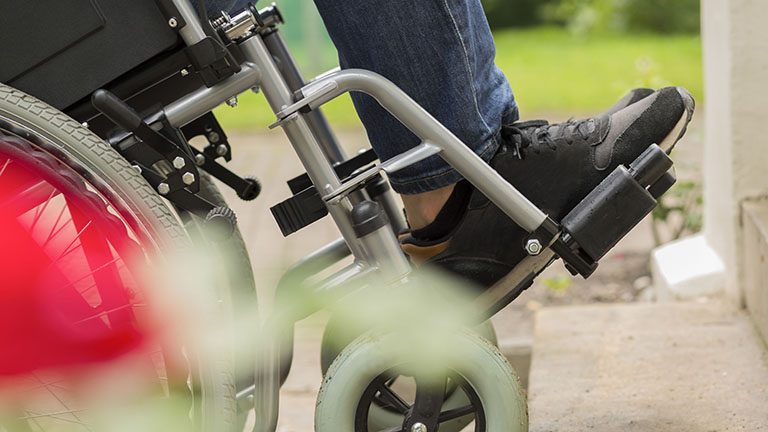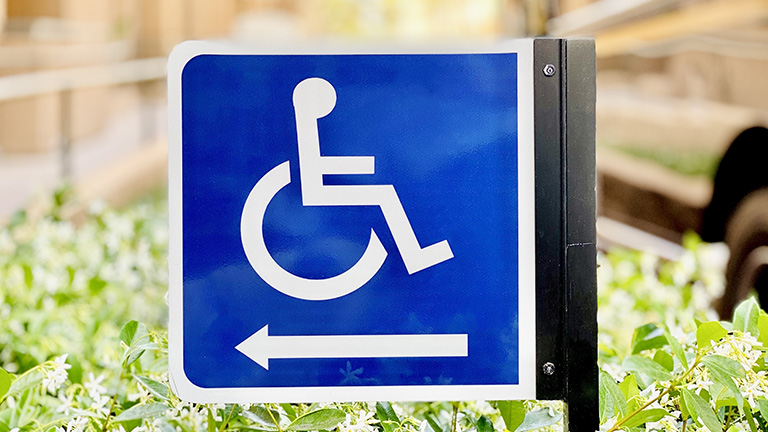Should I Choose a Portable Wheelchair Lift or a Permanent One?
Even if you are familiar with vertical platform lifts (VPLs), you may be unfamiliar with portable (also known as “relocatable”) lifts. Ascension portable wheelchair lifts are easy to move, safe, reliable, and attractive.
Compare Ascension’s Wheelchair Lifts
Portable units can be much more flexible than permanent lifts. However, your choice will depend on several factors, including:
- Your type of facility
- Location of the lift
- How the lift will be used (and who will use it)
- Local code requirements
Portable Lift Essentials
Portable lifts can be especially useful for event-driven locations, such as performance stages. “Event-driven” means the space will need to be accessible only at specific times for specific occasions. If your facility has a stage or raised event area, a portable lift may be perfect.
In spaces that serve several functions, such as school cafetoriums, portable units can offer great flexibility. They can also provide one simple solution to venues with more than one stage, or with a portable stage (especially one that can be set to different heights).
Historic preservation projects present a unique case. Portable lifts may be the only realistic choice to provide ADA access while maintaining the site in its original state. Keep in mind that the height limit of portables is typically about 5 feet.
Portable Lift Codes
Local jurisdictions often do not require permitting and inspection of portable lifts, excluding them from codes that regulate elevators and permanent lifts. In this case, you can simply get the lift as a stand-alone piece of equipment.
Be aware that a few jurisdictions require portables to be permitted, or may limit the use of portable lifts even at stages. Therefore, you should check with your local code officials.
Q: Can I still use a portable unit if I have a stage, but do not plan to move the lift?
A: Yes! In fact, a portable lift can be the simpler solution if it does not need to be permitted and installed. What’s more, if you remodel later on, you might use the same lift in a new location – especially if you get one with a long warranty.
Permanent Lift Essentials
Just because you never plan to move it, you don’t necessarily have to get a permanent lift. If you can use a portable unit, it may be simpler. However, most local codes require permanent lifts in egress route settings.
For instance, permanent VPLs are usually more appropriate for locations that must be accessible to the general public at any time. Building entrances and lobbies, hallways, and elevation changes between activity areas are just a few examples.
Permanent lifts are usually anchored in place, hard-wired into building electrical power, have controls mounted on adjacent walls, and get permitted/inspected annually. You know the lift will always be there for your patrons because none of your personnel will be tempted (or able) to move it to serve a different location in the venue.
Permanent Lift Codes
Elevator codes apply to permanent lifts in most jurisdictions, usually requiring formal permitting and annual inspections. However, if you can make a case for needing a portable lift in a location that would ordinarily call for a permanent one, you may be able to apply for a “variance.” Historic preservation projects are one example where minimal impact of a portable unit may be a justifiable solution.
Checklist for Choosing a Portable Lift
As with any product, different brands and models can have very different features and benefits – and very different price points. When choosing a portable ADA lift, pay attention to the features that may be important for your intended use, to know that you are paying for everything you need and getting everything you pay for!
- LABOR: Can one person move it easily, or does it require additional labor?
- TRANSPORT: Does it roll easily on its own casters?
- SETUP: Are the casters easy to remove for setup?
- TRAVEL: Can it also be moved easily by forklift (or even in a truck) over greater distances?
- VISUALS: Does it have a low profile and large windows so it won’t block lines of sight?
- NOISE LEVEL: How quiet is it when it lifts a person up to the stage?
- RELIABILITY: How long is the warranty?
- ERGONOMICS: Does a wheelchair enter at floor level, or do they need to negotiate some kind of ramp to get up into the lift?
- SAFETY: What safety features are standard? Which ones cost extra? Which ones are unavailable?
- AGE GROUP: Is it designed for use by adults, children, or both?
- PATRONS: Is it designed strictly for wheelchair users, or also to protect standing attendants and people using crutches, canes, walkers, etc.?
Summary
Consider portable lifts especially at stages and other event-driven locations. Also consider a portable lift where the site limits your ability to modify it, such as in historic preservation projects.
Consider permanent lifts where code requires them, such as building entrances, lobbies, hallways, and all other locations that may need accessibility at any time. However, even in such locations, you may be able to get a “variance” if you can make a case for needing a portable lift instead of a permanent one.
Even if you do not plan to move the lift, you may still want to consider the simplicity of a portable lift at your stage.



